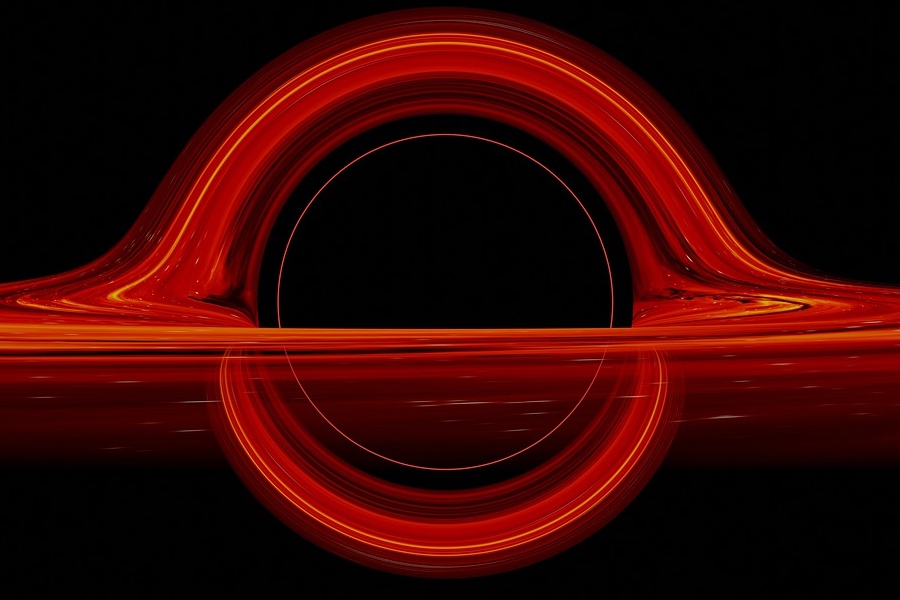Interstellar was released in 2014 and quickly became a pop culture icon. The movie grossed $681 million dollars in its first year making it the 10th highest grossing film of 2014.
The movie starred actors like Anne Hathaway, Mathew MacoNaughey, and Matt Damon. The soundtrack was also composed by legend Hans Zimmer giving the movie an amazing sound. The movie was also exclusively produced by caltech physicist, Kip Thorne, who acted as a scientist consultant giving the movie an accurate representation of physics.
Interstellar became a worldwide sensation and sparked many controversies of physicists who argued the accuracy of the movie.
Summary:
Interstellar takes place in 2067 where the world is facing global extinction due to a famine and the self destruction of humans.
The movie follows Joseph Cooper (Mathew MacoNaughey), a former NASA pilot who is sent on a mission by NASA in a last ditch effort to save humanity. Cooper is joined by a crew of scientists with different specialties to assist the expedition. The group is assigned to visit the 3 planets and collect data from the previous mission.
The group is sent to a wormhole near Jupiter that leads to another galaxy with three possible habitable planets, however, the planets orbit a supermassive blackhole called Gargantua. The group arrives at the first planet called Miller’s planet, a complete ocean world. However, due to the gravitational pull of the black hole, Miller’s planet is affected by time dilation. Meaning that 1 hour on Miller’s planet is equal to 7 years back on earth.
The crew gets stuck on the planet for some amount of time after a colossal wave hits the ship. The crew arrives back at the mainship where they have found that 23 years have passed.
Production:
When Christopher Nolan was producing Interstellar, he needed a way to keep the movie as accurate as possible. So, Nolan went to theoretical physicist and Nobel Peace Prize recipient Kip Thorne for scientific consulting. Thorne would go on to become an exclusive producer for Interstellar and later write a book, The Science of Interstellar, describing the intricate science of the movie.
Interstellar uses a heavy focus on Einstein’s theory of relativity or more specifically, gravitational time dilation. Einstein said that time moves slower when an object is closer to an object of large mass, like a black hole. This idea applies everywhere in the universe, for example, the International Space Station lags behind approximately 0.01 seconds every year on Earth. This is due to the ISS being further from Earth and at a higher velocity.
Many physicists accepted this as the main way to explain the time dilation in Interstellar. However, the main spark of debate came from the actual black hole, Gargantua.
For example, Phil Plait, an American Astronomer and former Slate blogger, argued that for a planet to have a stable orbit around a black hole, it would need to be 3x the distance from the event horizon. This would only cause the time slowing to be about 20% of Earth’s time. What Plait didn’t know was that if a black hole is spinning, the centrifugal force can allow the planet to be closer to the black hole.
In Kip Thorne’s book, The Science of Interstellar, he explains that Gargantua has to be spinning at almost the maximum speed it can, that is an object can orbit faster than the speed of light. Given that the black hole is spinning at such speeds, it allows Miller’s planet to be extremely close to the event horizon giving it an extreme time distortion.
In the movie, the waves on Miller’s planet are gigantic because of the extreme gravitational pull of Gargantua. Thorne again explains in his book the science of these extreme waves. He stated that Miller’s planet would have to rock left to right every hour to get these extreme waves. These types of waves occur on Earth and are called “tidal bores,” but are usually small on Earth. Thorne also gives a second explanation stating that the warping of the planet’s crust could cause huge earthquakes and create tsunamis.
The book goes into further detail about Gargantua and the other planets as well as the science behind other aspects of the movie.
What did it get wrong?
Although Interstellar is a masterpiece, there are some flaws in the science but not many.
One of these flaws is the clouds of ice on Dr. Mann’s planet. As Cooper is flying into Mann’s planet, his ship is hit with shards of ice that were in frozen clouds. Many argue the possibility of these clouds since the possibility of these clouds forming is very unlikely.
Another flaw could be that the visuals of the movie are slightly off. For example, on Miller’s planet Gargautua would be directly above and take up half of the sky, but in the movie Gargautua is smaller. Gargantua would also be blue shifted and red shifted due to the doppler effect. This would cause Gargantua to look bright and slightly blue on the left, and dim and slightly red on the right.
Bottom line
Interstellar may be the closest we come to a “realistic,” science fiction movie. Although the movie gets some small things wrong, all the physics would work out in the real world but would be extremely unlikely. Besides the science, Interstellar is a great movie that takes you on an emotional rollercoaster and is a must watch.













